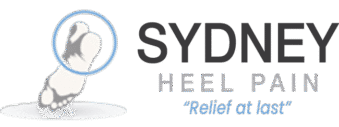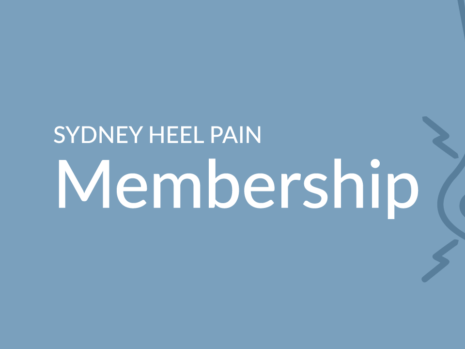Case Study October 2017 – Sever’s Disease Causing Heel Pain
A 12 year old boy presents to the Sydney heel pain clinic in Miranda, complaining of Sever’s disease in his right foot. The child’s mother reports to the podiatrist that her son has been suffering with heel pain for approximately 7 months. She took her boy to see the doctor who referred her for an x-ray, and who then diagnosed Sever’s disease. The boy is going through a growth spurt and has shot up in the last 8 months. He is a very active boy and plays approximately 6 periods of sport each week. He plays for the school basketball team and soccer team. During physical activity, the pain from Sever’s disease has been affecting his performance. He is forced to limp and cannot run freely. Each morning when getting out of bed, the pain from the Sever’s disease is extremely prominent and causes the patient to limp. The child’s mother also reports to the podiatrist that he seems to have a funny walk, and that he bounces with each step that he takes. The patient reports he has experienced some calf cramping and pain in his Achilles tendon in addition to the Severs disease. The patient has spent some time with a local physiotherapist who has encouraged some exercises but these have not helped. The family purchased some heel cushions to sit inside his school shoes and sports shoes. The patient reports mild relief from the use of these heel cushions but not sufficient to treat the condition properly. The child’s mother informs the podiatrist that the pain from the Sever’s disease has warranted the use of Voltaren gel, which she would apply to her child’s foot each evening before bed. Once again, there was mild relief from the Voltaren gel but the Sever’s disease persists. The family returned to the local GP who advised they seek the opinion and treatment of a podiatrist. The patient has not experienced ill foot health before and he has never suffered with Sever’s disease. The patient arrives today with his school shoes, basketball shoes and soccer boots, and with the gel heel cushions that he has been using inside the shoes. He also presented with his x-ray films and a report. The report quite clearly states that the patients exhibits Sever’s disease. The child’s mother also informs the podiatrist that she would prefer her son to continue to be physically active and maintain his positions within the school sports teams.
Physical Assessment for Sever’s Disease
Sever’s disease is a condition affecting the growth plate of the heel bone, usually between the ages of 7 and 14 years. Pain is usually located around the posterior and plantar aspect of the heel bone. The podiatrist applied moderate pressure to these areas which elicited heel pain. Moderate pressure was applied to the same areas of the left foot and there was no reaction from the patient. The podiatrist agreed with the diagnosis that the patient demonstrated Sever’s disease in his left foot.
Biomechanical Assessment
Sever’s disease usually develops in association with physical and biomechanical factors. The podiatrist carried out a thorough biomechanical assessment to see which factors may have led to the onset of this patient’s condition. Using black ink, the podiatrist highlighted anatomical markers on the posterior aspect of the patients calf, Achilles tendon and heel bone. The patient was then observed walking and running barefoot on a treadmill. The podiatrist captured the patient’s foot function using digital software on an iPad. The video was replayed in slow motion and observations were made. The podiatrist was able to observe early heel left bilaterally, which is a common finding in patients with tight calf muscles and / or Sever’s disease. The tight calf muscles become shorter and they pull the heel off the ground early in the gait cycle. This pressure from the calf muscles creates pulling and physical irritation on the growth plate of the heel bone – alas Sever’s disease.
Due to the tight calf muscles, this patient did not demonstrate over pronation. Instead the podiatrist was able to observe good arch contour and stable foot architecture. During running, there was naturally a little more pronation, but again the level of pronation was not of concern.
Treatment for Sever’s Disease
The family were informed that several factors were to be considered in the treatment of the child’s Sever’s disease. The Sydney Heel Pain mobile phone application was installed on the patient’s iPad and the Mother’s iPhone. The application contains important information surrounding the treatment of Sever’s disease.
1: Calf stretching
2: New school shoes
3: The application of cold ice packs
4: The use of heel lifts inside the shoes
The family were informed that in order to relieve the pain from Sever’s disease, the patient must improve the range of motion in his calf muscles. The podiatrist demonstrated the calf stretches and the patient performed them under guidance. The stretching technique and the frequency of these stretches was outlined in the mobile phone application.
The podiatrist assessed the patient’s school shoes which were due for replacement. The parents were advised what to look for when purchasing the next pair of school shoes. The wear and tear on the existing school shoes would not provide sufficient control for the patient’s feet and the Severs disease would likely persist.
Sever’s disease involves irritation and swelling around the growth plate of the heel bone. To this end, the application of ice packs would assist and accelerate healing by reducing said swelling. The ice packs would also reduce the pain and give the patient some relief from the Sever’s disease.
In order to reduce the load on the heel bone and the Achilles tendons, 9 mm heel lifts were provided. These were to be inserted under the liner of the shoe beneath the heel. These were to be used at all times in all shoes.
Other general information surrounding treatment of this patients Sever’s disease was to be found in the mobile phone application and was to be followed.
2 Week Check
At the two-week check up, the patient reported that the pain from the Sever’s disease had improved by approximately 50%. He was still participating in all periods of sport and physical activity.
4 Week Check
Improvement had plateaued and was reported to be approximately 60%. The patient was advised to pull back on quick movement sports.
6 Week Check
The patient reported further improvement and described approximately 80%. He no longer experienced pain throughout the day but was aware of some mild pain each morning when starting to walk.
8 Week Check
After 8 weeks the patient reported that he no longer felt pain from the sever’s disease. The podiatrist applied moderate pressure to the posterior and plantar aspect of the heel bone and there was no reaction from the patient.
The patient was advised to slowly return to physical activity and to maintain good calf range via the stretches shown. The 9mm heel lifts were swapped for 5mm. The patient was advised to wean off the 5 millimetre lifts in due course.
Naturally the patient was advised to return to the podiatry clinic if his Sever’s disease returned.
Please note the information contained in this case study is specific to one particular patient. If you are concerned about Sever’s disease, you should seek the help of a suitably qualified sports podiatrist.
Written by Karl Lockett





